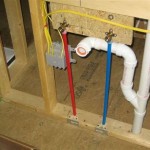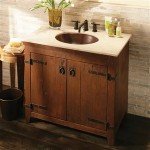How to Get Rid of Humid Smell in Bathroom
A humid smell in bathrooms is a common problem, stemming from moisture buildup that fosters the growth of mold, mildew, and bacteria. This persistent odor is not only unpleasant but can also indicate potential structural damage and health risks. Eliminating this smell requires a multifaceted approach, focusing on identifying the cause, improving ventilation, addressing existing mold and mildew, and implementing preventative measures.
Identify the Source of the Humidity
Pinpointing the origin of the humidity is the first step towards eradicating the accompanying odor. Bathrooms are inherently prone to moisture, primarily due to showers, baths, and sinks. However, certain underlying issues can exacerbate the problem, leading to excessive humidity and a lingering smell.
Check for Leaks: Thoroughly inspect all plumbing fixtures, including faucets, showerheads, pipes beneath sinks, and toilets. Look for signs of water damage, such as water stains, peeling paint, or warped flooring. Even small, slow leaks can contribute significantly to humidity levels over time. Pay close attention to areas around grout and caulking, as these are common points of failure.
Assess Ventilation: Examine the bathroom's ventilation system. Is there a working exhaust fan? If so, is it adequately sized for the room? An undersized or malfunctioning exhaust fan will fail to remove moisture effectively. Furthermore, consider where the exhaust fan vents to. Ideally, it should vent directly to the exterior of the house. Venting into an attic or crawl space can lead to moisture buildup and related problems in those areas.
Evaluate Shower Curtains and Doors: Shower curtains and doors can trap moisture within the shower or tub enclosure. If not properly cleaned and dried, they can become breeding grounds for mold and mildew. Check for visible signs of growth and inspect the seals around shower doors for water leakage.
Observe Condensation: Monitor surfaces for condensation, particularly on mirrors, windows, and walls. Excessive condensation indicates that the air is saturated with moisture and that the ventilation system is not effectively removing it. Persistent condensation can lead to the formation of mold and mildew.
Improve Ventilation
Effective ventilation is arguably the most crucial element in preventing and eliminating humid smells in bathrooms. Proper airflow helps to remove moisture-laden air, preventing the conditions that promote mold and mildew growth. Addressing ventilation deficiencies can significantly reduce humidity levels and eliminate the associated odor.
Repair or Replace Exhaust Fan: If the bathroom lacks an exhaust fan, installing one is highly recommended. When selecting a fan, consider the size of the bathroom. A general rule of thumb is to choose a fan with a CFM (cubic feet per minute) rating that is equal to or greater than the square footage of the bathroom. If the existing exhaust fan is malfunctioning or undersized, repair or replace it with a more powerful and efficient model. Ensure the new fan is properly vented to the exterior.
Run the Exhaust Fan Consistently: Encourage the consistent use of the exhaust fan during and after showers and baths. Ideally, the fan should be run for at least 20 minutes after bathing to allow for complete moisture removal. Consider installing a timer switch to automate the fan's operation and ensure it runs for the appropriate duration.
Increase Natural Ventilation: When weather permits, open windows to allow for natural ventilation. This can help to circulate fresh air and reduce humidity levels. However, be mindful of security concerns and avoid leaving windows open unattended.
Improve Airflow Within the Bathroom: Ensure that the bathroom door has adequate clearance at the bottom to allow for airflow. If the door fits tightly, consider trimming the bottom slightly or adding a vent to facilitate air circulation. Avoid overcrowding the bathroom with items that can obstruct airflow and trap moisture.
Address Existing Mold and Mildew
Once the source of the humidity has been identified and ventilation improved, it is essential to address any existing mold and mildew growth. Mold and mildew not only contribute to the humid smell but can also pose health risks, particularly for individuals with allergies or respiratory sensitivities. Safe and effective removal is crucial for eliminating the odor and preventing its recurrence.
Wear Protective Gear: Before attempting to clean mold and mildew, it is important to wear appropriate protective gear, including gloves, a mask, and eye protection. This will help to prevent exposure to mold spores, which can be irritating to the skin, eyes, and respiratory system.
Clean with Mold and Mildew Remover: Use a commercially available mold and mildew remover, following the manufacturer's instructions carefully. Apply the cleaner to affected surfaces and scrub with a brush or sponge. Pay close attention to areas around grout, caulking, and fixtures. For stubborn mold, allow the cleaner to dwell on the surface for a longer period before scrubbing.
Use a Bleach Solution (with caution): A diluted bleach solution (1 part bleach to 10 parts water) can be effective for killing mold and mildew. However, bleach should be used with caution, as it can be harmful if inhaled or ingested. Always wear gloves and eye protection when using bleach, and ensure adequate ventilation in the bathroom. Never mix bleach with ammonia, as this can create toxic fumes.
Clean Porous Surfaces: Porous surfaces, such as drywall and wood, can be more difficult to clean, as mold and mildew can penetrate deep into the material. In some cases, it may be necessary to remove and replace affected sections of drywall or wood. If the mold growth is extensive, it is advisable to consult with a professional mold remediation company.
Dry Thoroughly: After cleaning, thoroughly dry all surfaces to prevent the mold and mildew from returning. Use a clean towel or cloth to wipe down walls, floors, and fixtures. Consider using a dehumidifier to further reduce moisture levels in the bathroom.
Implement Preventative Measures
After addressing the source of the humidity, improving ventilation, and removing existing mold and mildew, it is essential to implement preventative measures to ensure that the humid smell does not return. Consistent maintenance and proactive steps can help to maintain a dry and odor-free bathroom environment.
Regular Cleaning: Establish a regular cleaning schedule for the bathroom, paying particular attention to areas that are prone to moisture buildup, such as shower curtains, shower doors, and grout. Wipe down surfaces after each use, and regularly clean with a mold and mildew remover.
Proper Grout and Caulking Maintenance: Inspect grout and caulking regularly for cracks or damage. Repair or replace damaged grout and caulking as needed to prevent water from seeping into walls and floors. Apply a sealant to grout to make it more resistant to water penetration.
Use Absorbent Mats: Place absorbent mats on the floor to capture excess water and prevent it from pooling. Wash mats regularly to prevent mold and mildew growth.
Control Water Splatter: Be mindful of water splatter when showering or bathing. Keep shower doors and curtains closed, and avoid splashing water outside of the designated area. Promptly wipe up any spills to prevent moisture buildup.
Consider Dehumidifier: In particularly humid climates or in bathrooms with persistent moisture problems, consider using a dehumidifier to help control humidity levels. Empty the dehumidifier regularly to prevent overflow and ensure optimal performance.
Monitor Humidity Levels: Use a hygrometer to monitor humidity levels in the bathroom. Ideal humidity levels should be between 30% and 50%. If humidity levels consistently exceed this range, take steps to further improve ventilation or address other underlying issues.
Professional Inspection: If the humid smell persists despite implementing these measures, it is advisable to consult with a professional. A plumber or mold remediation specialist can conduct a thorough inspection to identify any hidden leaks or underlying issues that may be contributing to the problem. They can also recommend appropriate solutions and ensure that the bathroom is properly remediated.
By diligently addressing the source of the humidity, improving ventilation, removing existing mold and mildew, and implementing preventative measures, it is possible to eliminate the humid smell in the bathroom and maintain a clean, healthy, and odor-free environment. Consistent maintenance and proactive steps are key to preventing the problem from recurring and ensuring the long-term health and well-being of the home and its occupants.

7 Indispensable Bathroom Smell Remover S In Housekeeping

How To Eliminate Smell From Bathroom 10 Simple Ways

How To Make Your Bathroom Smell Good 10 Genius S Get The Stink Out Bright Side

Help My Bathroom Smells Musty What Should I Do Phyxter Home Services

7 Indispensable Bathroom Smell Remover S In Housekeeping

How To Get Rid Of Sewage Smell In Your Bathroom Bond Cleaning Adelaide

5 Ways To Get Rid Of That Mildew Odor In Your Bathroom For Good

Why Is There A Stagnant Smell In The Bathroom

Bathroom Smells Musty Causes And Solutions

What To Do When The Bathroom Sink Smells Like Mildew Mold Smell
Related Posts







